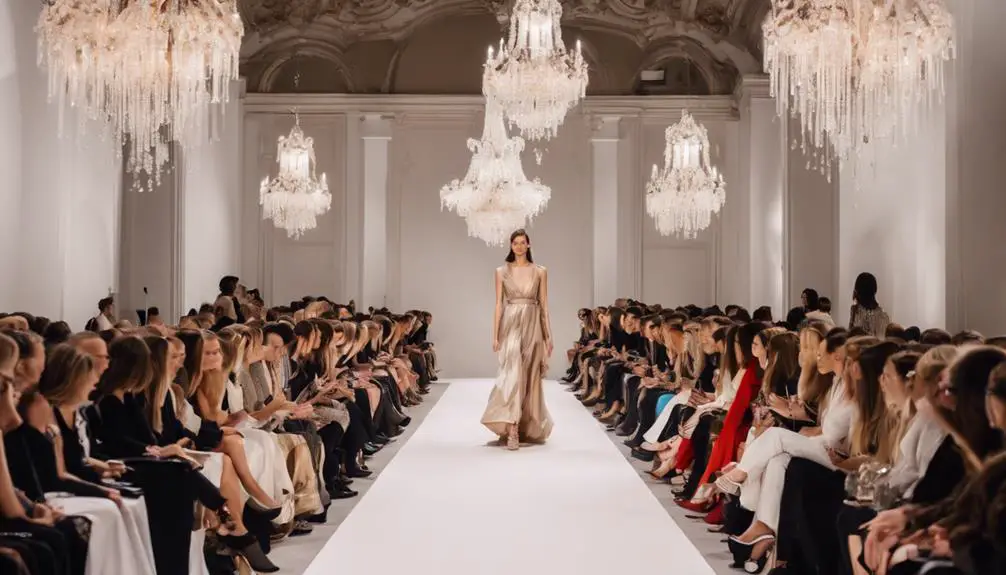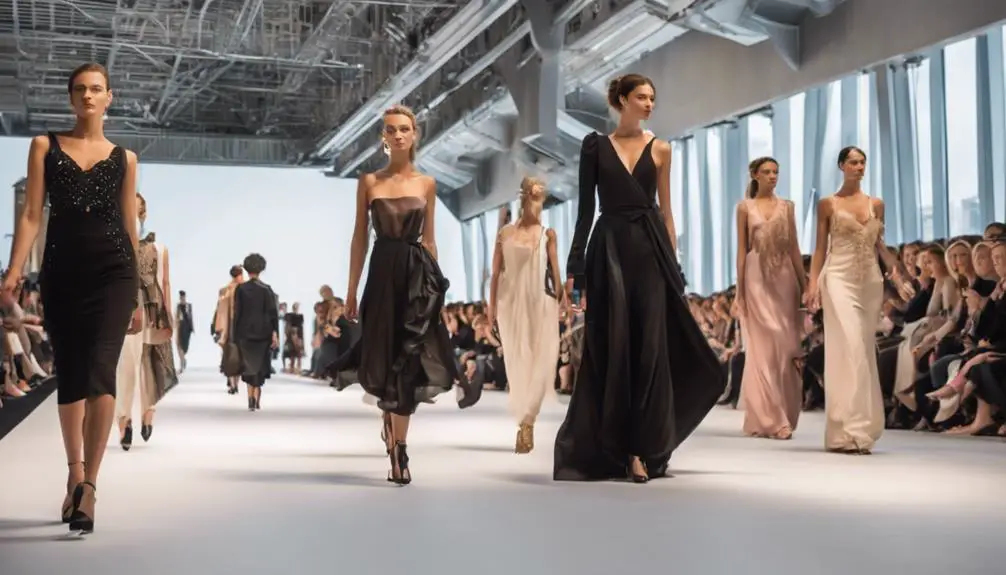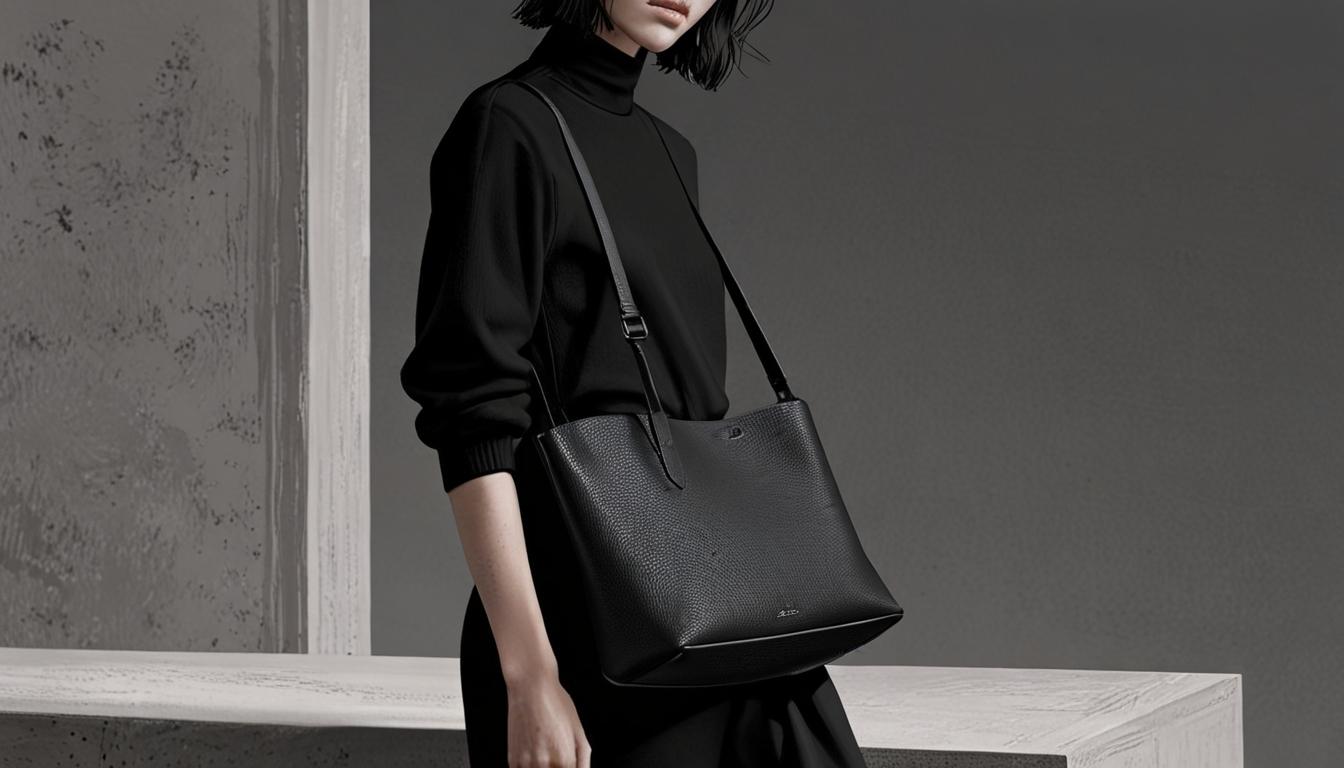Germany is home to some of the most expensive fashion brands, where luxury meets exceptional craftsmanship. You'll find iconic names like Hugo Boss, celebrated for tailored suits, and Jil Sander, known for its minimalist elegance. Escada dazzles with vibrant, sophisticated women's fashion, while MCM excels in luxury leather goods featuring the recognizable Visetos monogram. Acronym combines high-end materials with innovative performance wear. As the luxury market grows, these brands not only embody style but also emphasize sustainability, ensuring quality and ethical practices. Stay tuned, as there's even more to uncover about the lavish world of German fashion!
Overview of the Luxury Fashion Market

The luxury fashion market in Germany stands out as a dynamic sector, showcasing a blend of heritage and modernity through its iconic brands. You'll find that this market is not just about high-quality craftsmanship; it's also rich with innovation and style. German fashion brands, like Hugo Boss, MCM, and Escada, have carved out a significant place on the global stage, contributing to a unique fashion identity that combines tradition with contemporary aesthetics. In 2023, for instance, Hugo Boss reported an impressive revenue of EUR 555 million, underlining its status as a leader in luxury fashion. Additionally, much like the historic journey of Fruit of the Loom's evolution, German brands also focus on continuous innovation to meet consumer expectations.
As you explore this market, you'll notice a growing demand for exclusive designs and superior craftsmanship. Consumers increasingly appreciate the details that elevate luxury items, making them not just purchases but investments in quality. Furthermore, sustainable fashion is emerging as a crucial trend, with brands like Jil Sander addressing the needs of eco-conscious shoppers. Their commitment to minimalist designs and ethical production practices reflects a broader shift in consumer preferences.
Events like Berlin Fashion Week and various regional trade fairs play an essential role in this ecosystem, providing platforms for showcasing high-end collections and facilitating connections between brands and fashion enthusiasts. These events not only highlight the creativity of German designers but also underscore the economic impact of the luxury fashion sector, ensuring that Germany remains a significant player in the global fashion arena.
Top High-End German Brands
Which German fashion brands truly define luxury and innovation? When you think of high-end German brands, several names come to mind, each embodying unique qualities that elevate luxury fashion to new heights. These brands aren't just about clothing; they represent a lifestyle characterized by sophistication, high-quality menswear, and unmatched craftsmanship.
- Jil Sander: Known as "The Queen of Less," this brand epitomizes minimalist aesthetic while delivering timeless pieces that blend elegance with simplicity.
- Hugo Boss: A staple in luxury fashion, it's renowned for its tailored suits and modern designs, making it a go-to for those who appreciate high-quality menswear.
- Escada: This brand shines brightly in the world of women's fashion, celebrated for its vibrant colors and sophisticated styles that make every woman feel special.
- MCM: Specializing in luxury leather goods, MCM's iconic Visetos monogram has become a symbol of status and style, appealing to fashion enthusiasts globally.
And let's not forget Acronym, which pushes boundaries with its innovative performance wear. Combining luxury materials with cutting-edge technology, it's perfect for those who demand functionality without sacrificing style.
These top high-end German brands showcase the best in luxury fashion, each offering distinct contributions that cater to diverse tastes and lifestyles. So whether you're looking for minimalist chic or vibrant elegance, German brands have something special just for you!
Revenue and Market Performance

In the competitive landscape of luxury fashion, revenue and market performance play crucial roles in determining a brand's success. You'll find that brands like Hugo Boss are making impressive strides in the luxury apparel sector, generating EUR 555 million in Germany in 2023 and setting a target of EUR 4.45 billion for 2024. This ambition reflects a robust market presence and a commitment to growth. Similarly, established brands like Carhartt, which has evolved its product lines since its founding in 1882 to cater to a diverse customer base, have shown resilience in challenging economic times, emphasizing the significance of adaptability in market strategies the significance of adaptability.
Adidas, the reigning champion of German fashion, raked in a staggering EUR 21.915 billion in 2018, solidifying its dominance in both the athletic apparel and global sneaker markets. Meanwhile, Puma isn't far behind, reporting EUR 8.6 billion in sales in 2023. With 97% brand awareness, Puma has made a significant footprint in the athletic apparel market, showcasing its appeal among consumers.
On the other hand, H&M illustrates the power of the fast fashion segment, achieving EUR 3 billion in revenue in Germany in 2023. Their pursuit of sustainability goals alongside impressive sales demonstrates a growing trend in consumer preferences.
Lastly, upscale retailer Breuninger achieved a turnover of EUR 1.6 billion in 2023, with over 50% of sales coming from online shopping. This shift towards digital retail reflects the changing dynamics of the fashion industry, where online presence is becoming increasingly essential. Overall, these brands highlight the diverse landscape of revenue generation and market performance in German fashion, showcasing the balance of luxury, athletic, and fast fashion.
Influence of Craftsmanship and Design
When you explore the world of high-end German fashion, you'll quickly notice how artisanal techniques play an essential role in creating standout pieces. Brands like Jil Sander showcase a minimalist aesthetic that elevates simplicity to an art form, proving that less truly can be more in the domain of luxury. With a focus on craftsmanship and design, these labels not only prioritize quality but also embrace innovative approaches that resonate with modern consumers seeking both style and substance.
Artisanal Techniques in Fashion
Artisanal techniques in fashion play an essential role in shaping the identity of German brands, blending craftsmanship with contemporary design. These techniques not only highlight the skill involved but also emphasize a commitment to quality and sustainability. You'll find that brands like Jil Sander and ACRONYM showcase minimalist design principles, where functionality takes center stage.
Here are some key elements that define this artisanal approach:
- Innovative craftsmanship: Mykita merges advanced technology with traditional eyewear techniques, creating pieces that are both stylish and functional.
- Sustainable practices: Emerging labels like PB 0110 focus on artisanal leatherwork, ensuring their production methods are environmentally friendly.
- Quality materials: Brands like Hien Le prioritize high-quality materials, reinforcing their dedication to sustainable fashion.
- Collaborative efforts: Increasingly, established labels partner with local artisans, preserving traditional techniques while pushing the boundaries of modern design.
Minimalist Aesthetic Appeal
Minimalist aesthetic appeal in German fashion reflects a keen emphasis on craftsmanship and design that captivates modern consumers. German clothing brands like Jil Sander, renowned as "The Queen of Less," have set the standard since 1968, showcasing simplicity and refined craftsmanship. This minimalist approach prioritizes high-quality materials and meticulous artistry, resulting in timeless pieces that resist the fast-fashion frenzy.
The influence of Berlin's vibrant nightlife and street culture can be seen in brands like ACRONYM and GmbH, which integrate functional design with minimalist aesthetics. This blend not only appeals to contemporary tastes but also reflects a larger trend toward sustainable practices among consumers. Many brands focus on reducing waste and promoting quality over quantity, aligning perfectly with the modern values of today's shoppers.
Here's a quick look at some key aspects of this aesthetic:
| Aspect | Description |
|---|---|
| Craftsmanship | High-quality materials and meticulous design |
| Timeless Pieces | Resisting fast-fashion trends |
| Functional Design | Blending aesthetics with practicality |
| Sustainable Practices | Emphasizing quality and reducing waste |
Embracing a minimalist aesthetic, German fashion brands continue to inspire admiration and respect in the luxury market.
Sustainability in Luxury Fashion

In recent years, sustainability has emerged as a crucial focus in luxury fashion, particularly among German brands. You'll find that these labels are increasingly integrating sustainable practices into their production processes, responding to the demands of eco-conscious consumers. For instance, Hugo Boss aims to reduce its carbon footprint and achieve 100% sustainably sourced materials by 2030. This commitment reflects a broader trend in the luxury sector, similar to how vintage Nike has evolved to meet changing consumer values with a focus on quality and design. Nike's brand history showcases a shift towards responsible production practices as well.
German luxury brands are embracing several key strategies to enhance sustainability:
- Ethical sourcing: Many high-end names, like Jil Sander and ACRONYM, prioritize transparency in their supply chains, ensuring quality craftsmanship.
- Organic and recycled materials: Brands such as Armedangels and LANIUS offer collections that emphasize environmentally friendly production standards.
- Circular fashion initiatives: MCM explores upcycling and repair services, extending the lifecycle of products and minimizing waste.
- Collaborations for sustainability: These brands are increasingly partnering with initiatives that promote responsible sourcing and ethical labor practices.
These efforts not only align with the global movement towards sustainable luxury fashion but also cater to a growing market of consumers who care deeply about the origins of their clothing. As you explore these brands, you'll see how they're paving the way for a more responsible approach to luxury, proving that style and sustainability can go hand in hand. The evolution of luxury fashion is here, and it's thrilling to witness!
Future Trends in German Fashion
What can we expect from the future of German fashion? The landscape is evolving, and it's an exciting time for both brands and consumers. As we move towards 2028, the German fashion industry projects a steady revenue growth rate of 1.00%, reflecting a consistent demand for apparel. This growth is rooted in a significant shift towards sustainable fashion, where brands are increasingly adopting eco-friendly practices. You'll see more labels using responsible production methods, catering to your desires for ethical choices in what you wear.
Digital transformation is also reshaping the industry. Brands will leverage e-commerce and social media to create engaging shopping experiences that resonate with you. Expect seamless online interactions where high-quality craftsmanship shines through, allowing you to appreciate the artistry behind each piece.
Consumer behavior is leaning towards minimalist aesthetics and quality over quantity. This trend aligns perfectly with the established reputation of German fashion brands known for their precision and elegance. As you navigate this changing landscape, keep an eye on emerging brands that might disrupt traditional market dynamics.
Monitoring brand performance becomes vital as innovative ideas and fresh perspectives enter the scene. In this dynamic environment, you'll witness a blend of tradition and modernity, with a strong emphasis on sustainability and craftsmanship. The future of German fashion is not just about what you wear; it's about making choices that reflect your values while celebrating exceptional design. Get ready to embrace a thrilling new era in fashion!
Frequently Asked Questions
What Are the Luxury Fashion Brands in Germany?
In Germany, you'll find luxury fashion brands like Hugo Boss and Jil Sander, celebrated for their innovative designs and sustainable practices. Explore MCM for luxury accessories and Acronym for cutting-edge fashion innovation.
What Is the Most Expensive Brand in Germany?
When you explore Germany's luxury fashion scene, you'll find high-end craftsmanship and exclusive collections that showcase the luxury fashion evolution. Designer collaborations elevate the experience, making each brand unique and valuable in its own right.
What Is the Most Famous German Clothing Brand?
You'll find Adidas stands out as the most famous German clothing brand, shaping German fashion history. It blends iconic German designers with sustainable practices, influencing streetwear trends and creating a lasting impact on global fashion.
What Is the Most Expensive German Company?
Like a rare gem shining brightly, the most expensive German company stands out in the luxury market. Its brand valuation reflects impressive company growth, showcasing significant fashion influence that captivates consumers and solidifies its elite status.





Your positive and uplifting words are like a ray of sunshine on a cloudy day Thank you for spreading light and positivity in the world
Really quite a lot of very good tips.
casino en ligne
Reliable data Cheers.
casino en ligne
Information certainly applied..
casino en ligne
With thanks, Useful stuff.
casino en ligne France
Amazing forum posts Regards!
casino en ligne France
Thank you. I value it!
casino en ligne
Regards. I like it!
casino en ligne fiable
Regards! Lots of information!
casino en ligne
Seriously lots of great data.
casino en ligne francais
Awesome forum posts, Thanks a lot!
casino en ligne